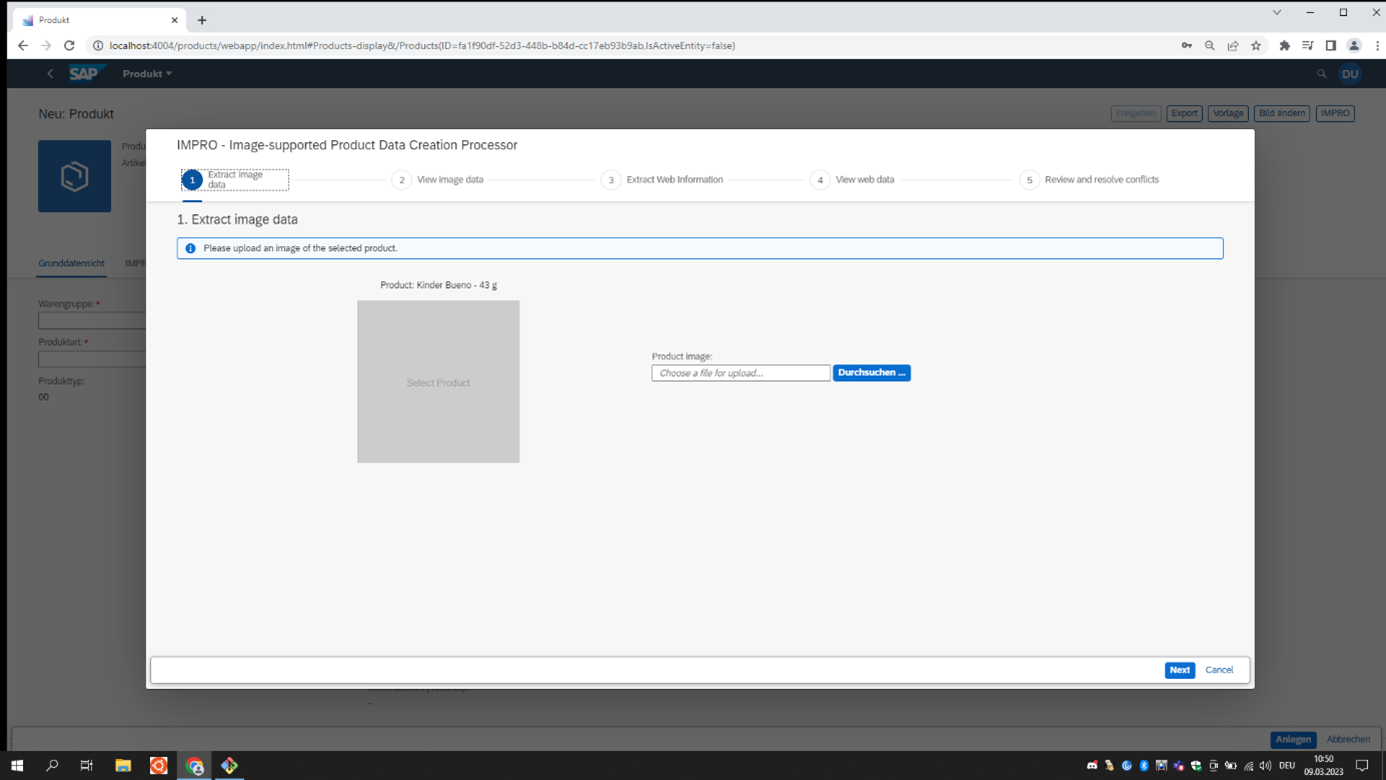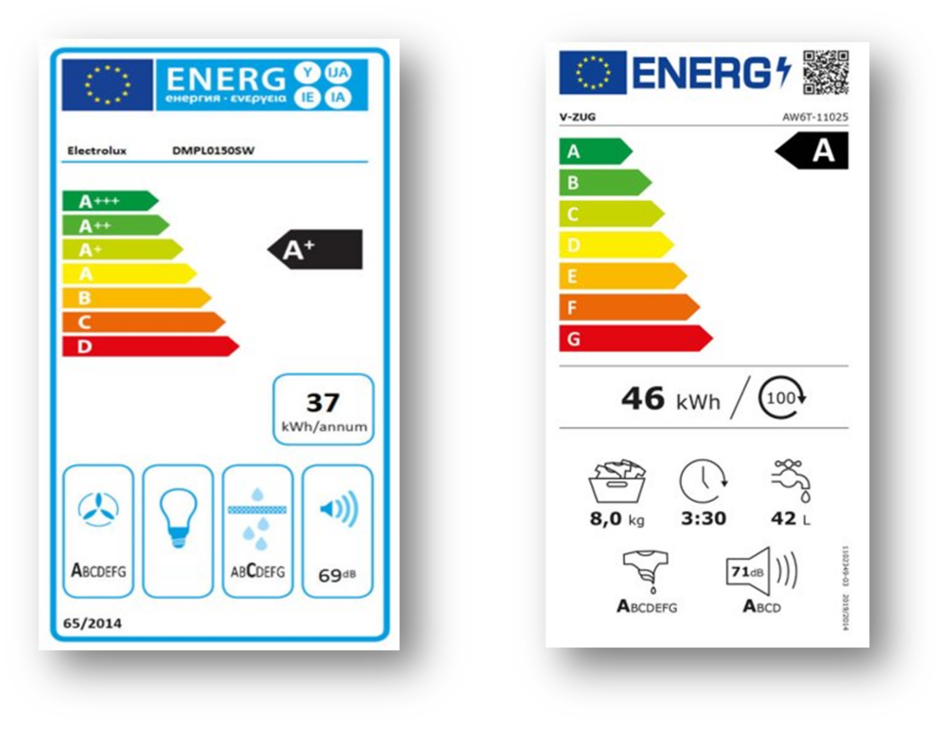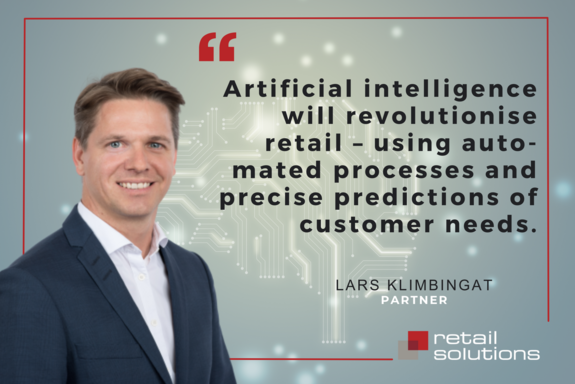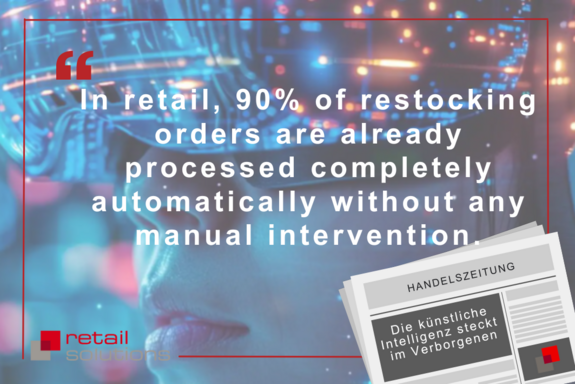Artificial intelligence in retail
The integration of artificial intelligence (AI) has ushered in a revolutionary change in the retail sector. From personalising customer experiences to optimising supply chain processes, AI has the potential to significantly increase efficiency and profitability in retail.
By utilising data analytics, machine learning and advanced algorithms, AI can help develop customised solutions that meet the ever-changing demands and needs of the modern marketplace. Whether it's improving purchasing and replenishment planning, designing product ranges to be more target group-specific or optimising prices - the possibilities are endless. Self-learning algorithms enable retailers to make precise predictions, optimise stocks and even react to trends at an early stage, which ultimately leads to increased competitiveness and greater customer satisfaction.

Artificial Intelligence
- Use of state-of-the art AI technologies
- Out-of-the-box integrations in SAP systems
- Ensuring the quality of master data
- Prediction of attributes & forecasts

Target
- Improving the basis for decision-making
- Greater automation of processes
- Outsourcing of monotonous tasks to AI, focus on more essential process steps
- Error detection in master data
- Seamless integration into the SAP landscape

Benefits
- Better data quality through automatic error detection in master data
- Saving time & resources through AI-supported solutions
- Optimised use of resources, as time-consuming troubleshooting is no longer necessary
- Competitive advantage through differentiation from competitors
Use cases
The ongoing development of artificial intelligence (AI) is opening up a wide range of innovative applications for retail companies.
Classification of product groups/article hierarchies
With large product portfolios or frequently changing product ranges, it is particularly important to maintain a precise structure of the item master data. Products must be categorised as precisely as possible into their corresponding product groups or item hierarchies. With the help of AI, this categorisation - based on text and/or image data - can be carried out more quickly and accurately. Various image processing and NLP methods are used for this.
Search for similarities
Similarity searches play a major role both in the creation of master data and in existing processes. For example, finding similar products when creating master data helps to automatically pre-fill certain attributes. Duplicates can also be avoided. Own brands can thus be compared when analysing competitors.
Forecasts
By integrating AI, large amounts of data from past sales transactions can be analysed to identify patterns and correlations. On this basis, companies can make precise forecasts about product characteristics, such as sales volumes, price trends or seasonal demand.
Error detection & and automated creation in master data
The AI algorithms continuously analyse the data and identify inconsistent entries that could represent potential errors. This error detection enables companies to improve data quality, optimise operational processes and minimise potential risks. AI-supported error detection thus provides a more reliable basis for business decisions in an SAP environment. In addition to error detection, it is possible to partially fill in attributes automatically to speed up the investment process.
Integration of Large Language Models (LLMs)
The integration of Large Language Models (LLMs) into an SAP Retail system can provide additional support for existing use cases. LLMs can also help to identify duplicates or inconsistencies in the master data.
Integration into SAP
There are basically two options for integration into an SAP system:
REST-API-Service:
Our REST API service enables the seamless integration of AI functions into SAP systems. Developers can access the AI features via clearly defined endpoints. This guarantees the flexibility to use both on-premise and the SAP Business Technology Platform (BTP).
Fiori Custom Control:
Our Fiori Custom Control offers a user-friendly integration of AI functions in SAP Fiori apps. Developers can integrate the ready-made control directly into their applications without any additional effort for implementing the AI logic. This enables a consistent user experience and saves time during development.
Example of an integration of AI in an SAP Fiori App

Some of our customers are already benefiting from AI-supported solutions
Implemented Use Cases
Duplicate recognition
The free text entry in name or address fields can lead to the creation of duplicates during master data maintenance. Duplicate entries were not recognised, particularly when new business partners were created. In the course of the S4 transformation, it is of the utmost importance that no errors are transferred to the new system during the migration of master data. By using natural language processing and other algorithms, duplicates in the master database could be detected, thus ensuring better master data quality.
Energy efficiency labelling
In March 2021, a new EU regulation came into force that regulates the labelling of the energy consumption of electrical appliances. This led to differences between the categorical data in the ERP systems and the images stored in the web shops. By extracting information from the images with the help of image processing, a classification could be made: This method made it possible to detect and eliminate inconsistencies between the images and the data in the database.

News
E3 Magazine: "AI in retail: progress and potential"
MoreFind out how artificial intelligence is transforming the retail industry and what challenges exist in dealing with big data and master data…
AI in Retail: Artificial Intelligence Works Behind the Scenes
MoreArtificial intelligence (AI) primarily assists in retail processes that are not visible to end customers.
Customer contact: How AI can help with the approach
MoreCustomer experience in digital commerce: Learn how artificial intelligence and technologies like SAP Emarsys are revolutionising online interactions…
![[English] [English]](/fileadmin/_processed_/b/4/csm_Webseite_Slider_KI_85bc7a3090.png)
![[English] [English]](/fileadmin/_processed_/8/3/csm_iStock_PC_000043964602Medium_6140957dec.jpg)


